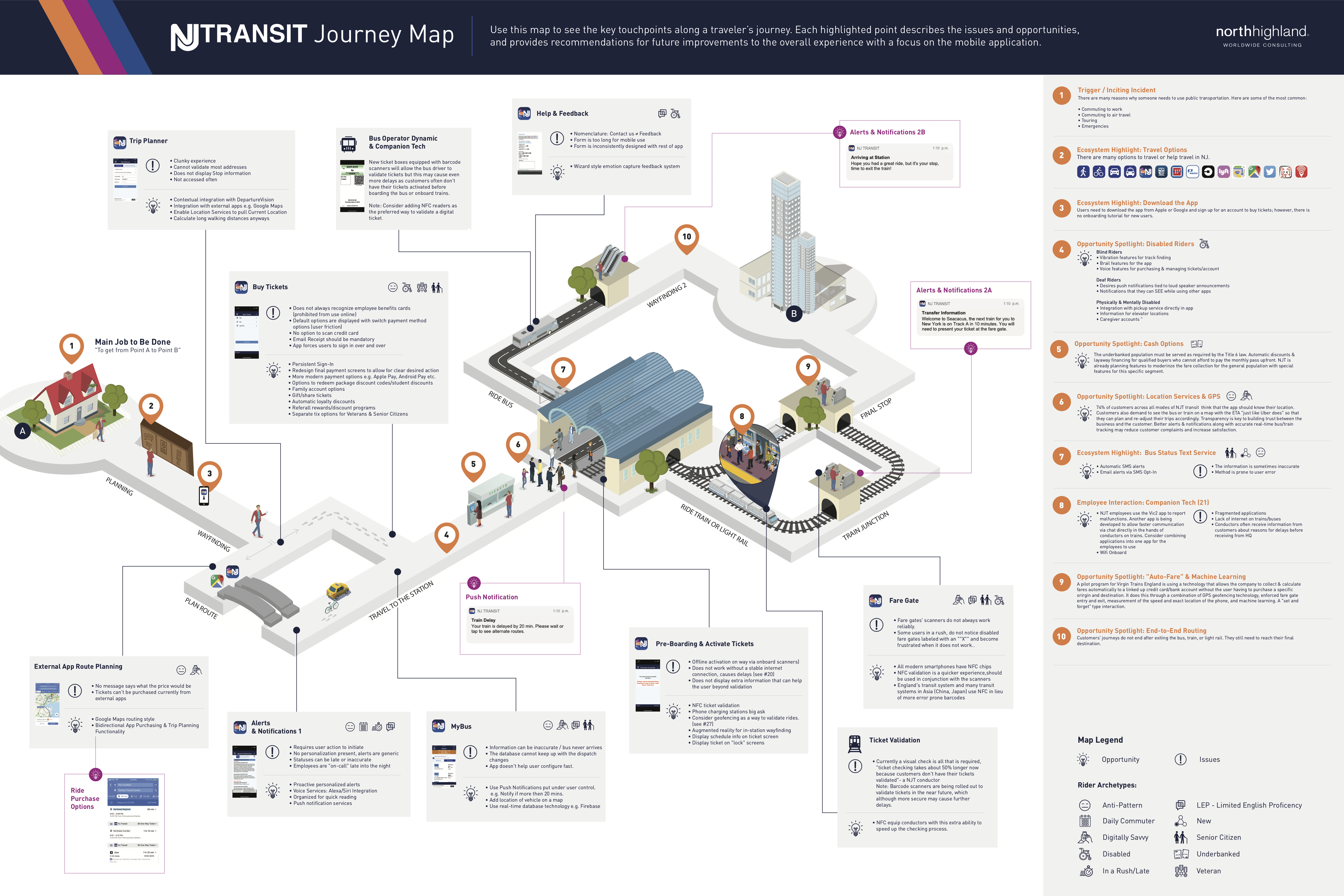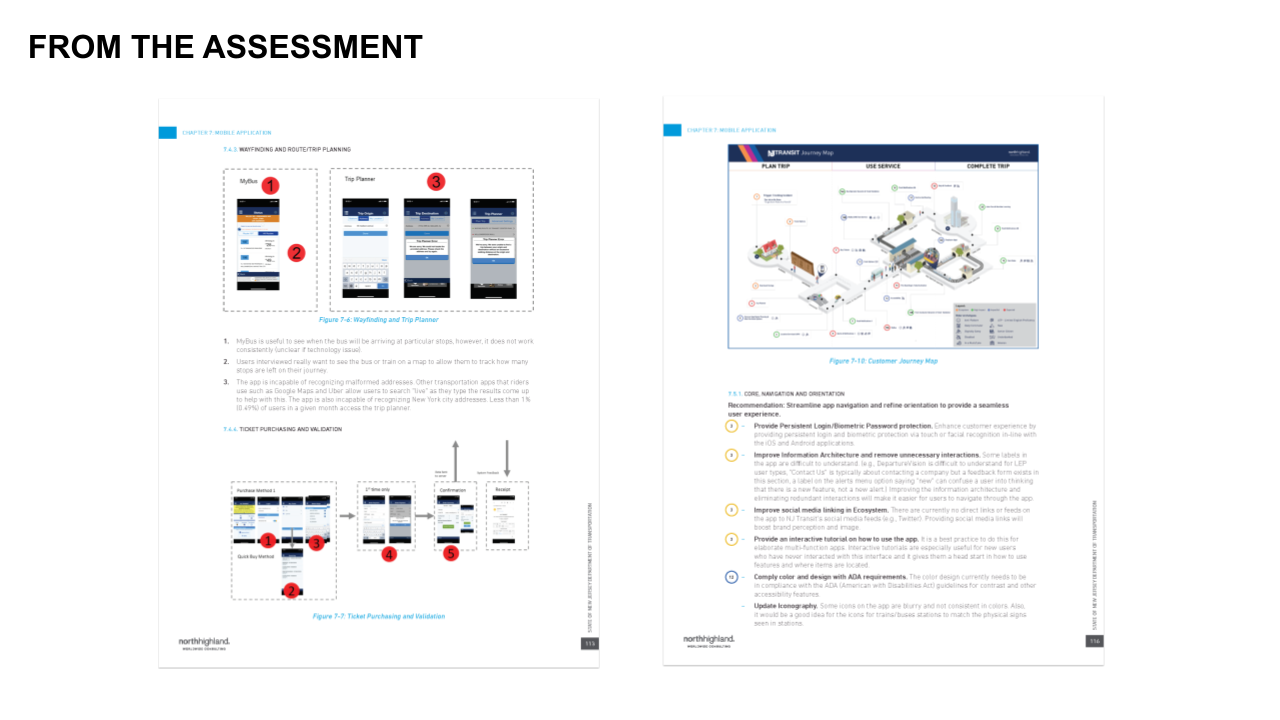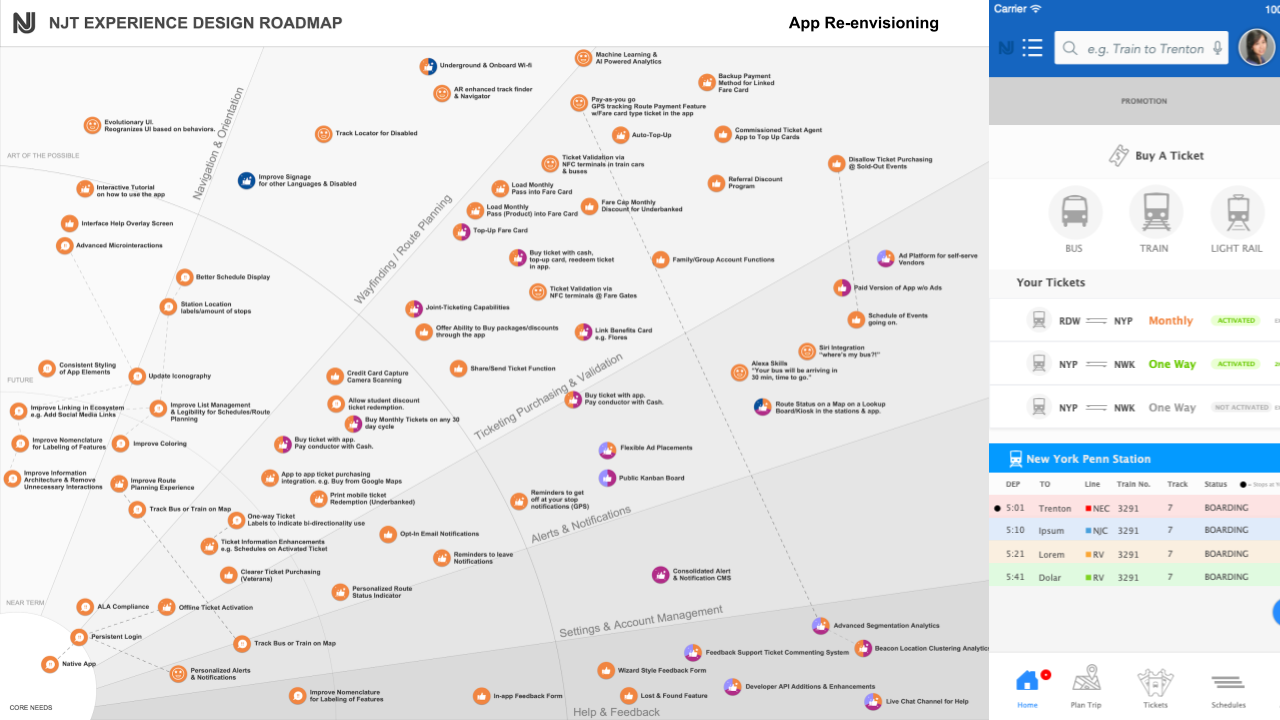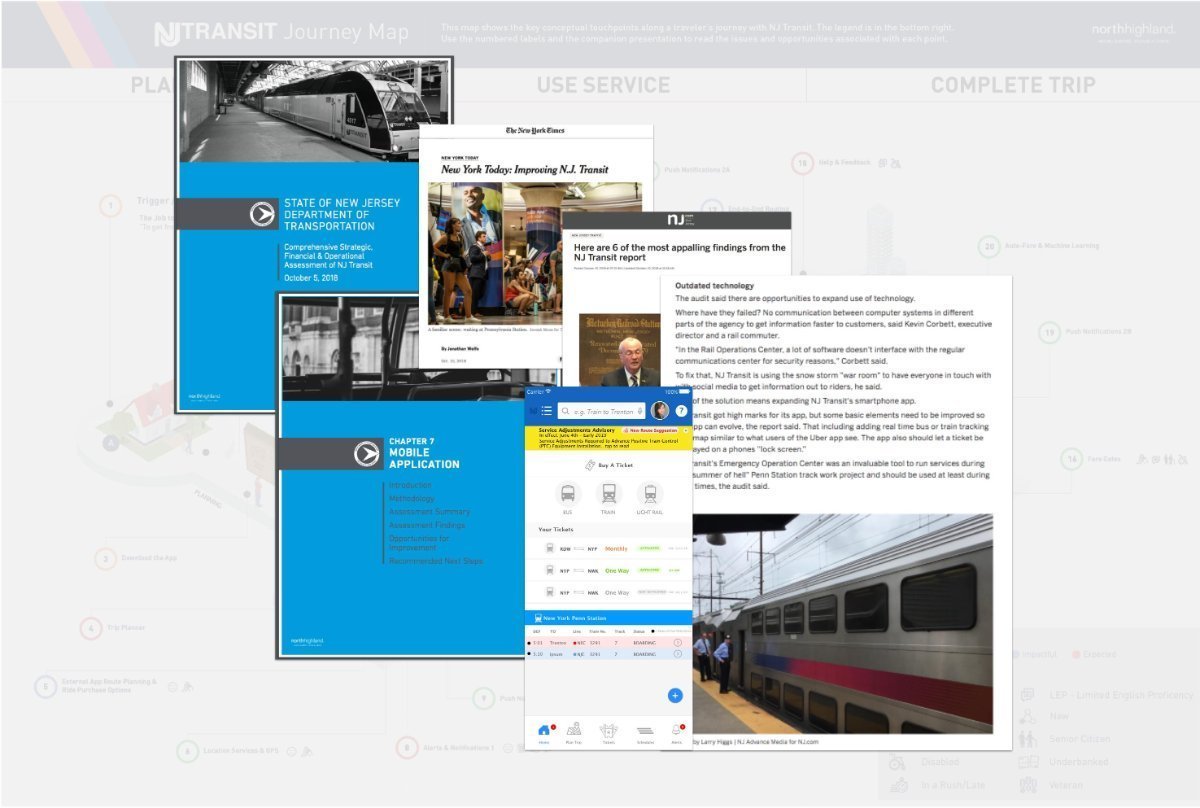Featured work
NJ Transit
During the past 30 years, New Jersey’s transit system has been established as an essential service. Unfortunately, riders found the end-to-end experience, less than optimal. Aging buses and political and financial troubles resulted in a public outcry for massive improvements. New Jersey Governor, Phil Murphy, called for a comprehensive audit of the state’s largest public transportation operator.
Jordan took on the portion of the assessment pertaining to the quality of the New Jersey Transit Mobile App and the customer service experience for its riders and was tasked with creating a point of view of how to optimize the entire experience for riders on the bus, heavy or light trains. The recommended solutions and audit was presented to Governor Murphy and featured in the New York Times. Full Report: Chapter 7

news articles
implemented recommendations
time savings
SolutionS and Methods
- Usability audit
- Behavioral Archetyping
- Semantic Profiling Analysis
- Intercept interviews w/staff
- Intercept interviews w/riders
- Needs to features analysis
- Service design analysis
- Mixed-fidelity Prototyping
- Feature storywriting
- Agile QA
THE STRATEGIC DESIGN PATH

I evaluated the current system by instituting a unique and proprietary experience analysis that accounted for all the major component layers of the specific virtual, physical, or hybrid experiences:
- Technology - how the experience is run, how well it performs
- Information - how the content is organized and understandable it is, how does it communicate what to do, how compelling is the content itself
- Interactivity - how intuitively information is accessed, moved, stored, and transformed to complete actions and how does the system provide feedback from action inputs to keep users on track
- Aesthetics - how unity and cosmetic attributes add to the overall experience

Beyond the audit, a request for recommendations was made by the Governor’s office for the app and other dependent systems. A deep future's study and exploration was conducted, comprised of stakeholder and rider interviews and international research into other transit authorities. This work led to the development of a unique roadmap referred to as the Feature Fan as well as a vision draft prototype.

The ultimate output led to a summary conclusion deliverable in the form of a specialized journey map that detailed a common journey experience for both bus and train riders. Recommendations were annotated along the way. The journey map pointed to key service slices in time, highlighting critical pain and opportunity points. Each macro-interaction shown is positioned as a companion to a micro-interaction in the app. The journey map is referred to as a super graphic since it has the ability to be understood simultaneously, at both a high and a deep level.

The eventual results of the audit were documented in a 100+ page report. The app analysis can be found in Full Report: Chapter 7. Beyond this many news articles were published in magazines and major news outlets such as the NY Times and NJ.com .